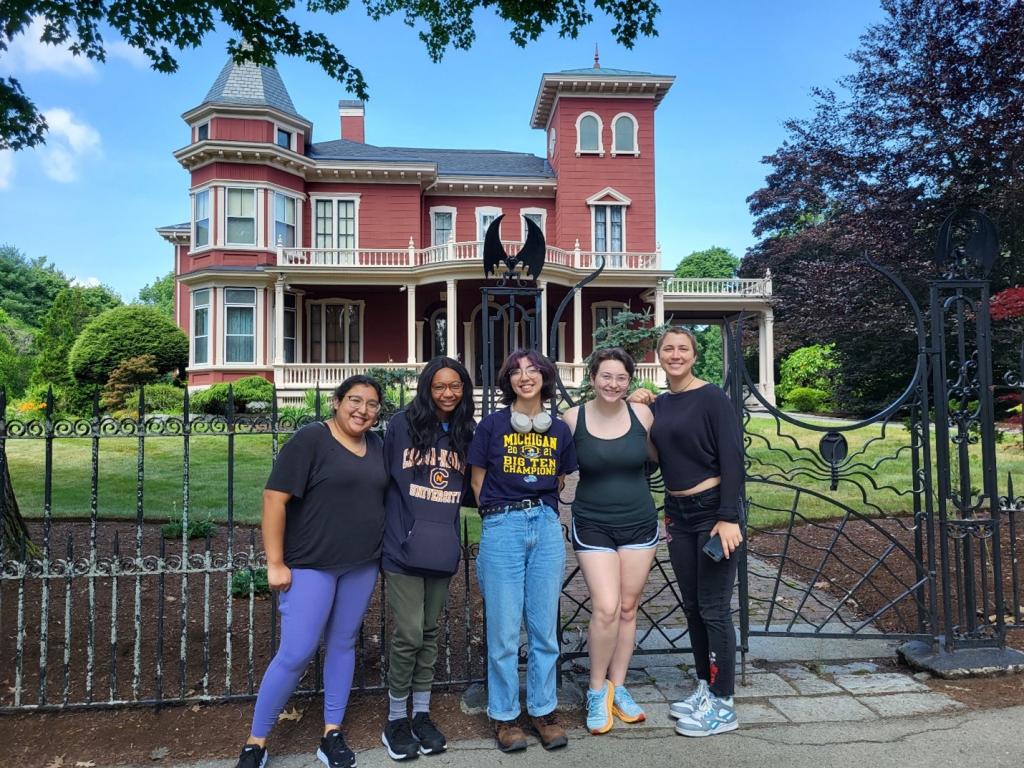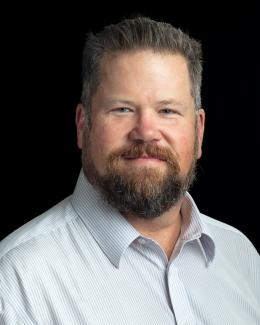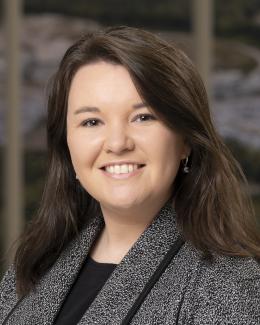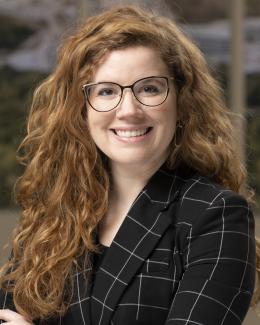
Brianna Greer had no idea that banana plants could be useful in making lightweight parts for cars and bicycles.
But that was before she became an undergraduate research intern at the Department of Energy’s Oak Ridge National Laboratory in the summer of 2023.
“You really wouldn’t expect it when you look at a banana tree,” Greer said. “You just wouldn’t think of it as a bicycle part.”
And yet, under tutelage of Cait Clarkson and Amber Hubbard, both ORNL R&D associate staff members in the Sustainable Manufacturing Technologies group, Greer worked with banana fiber as a bio-based material for composite reinforcements. She focused on a unique process to integrate polymer and natural fibers as a manufacturing method, and she investigated how fibers could increase their composite performance.
It’s well known that the fruit is quite squishy, especially when ripe, but banana trees are actually quite hard, and contain long, tough fibers that can be used to strengthen other materials. The fibers are extracted from the stem, or trunk, of the plant to create fiber bundles that are then cleaned and dried. And thus was born a bicycle wheel well reinforced with banana fiber.
Greer, now 21 and a junior at Berea College in Kentucky, joined a group of 11 other undergraduate students in the SM2ART Research Experience for Undergraduates, or REU, program, modeled after the National Science Foundation REU format, to learn how to do research following the scientific method.
The Sustainable Materials and Manufacturing Alliance for Renewable Technologies, or SM2ART, program is a collaborative initiative between ORNL’s Manufacturing Demonstration Facility and the University of Maine, funded by DOE’s Advanced Materials and Manufacturing Technologies Office. The program includes researchers from across the University of Maine System, ORNL and the University of Tennessee, Knoxville.
A dozen undergraduates each summer spend 10 weeks at ORNL or at the University of Maine-Orono, mentored by scientists and doing research on real-world problems. All 12 students spend their first week at ORNL and their last at the University of Maine, but split up for the eight weeks in between.
One of the ORNL research projects that Clarkson heads is investigating nonwoven fiber composites for automotive applications. Researchers created nonwoven fiber mats with natural fiber and a polymer fiber intermingled that can be molded into a polymer matrix composite. Banana is one of the natural fibers of interest, and so are coconut, flax and hemp. Both Greer and Auburn University student Emma Drake worked on projects involving the banana fiber.
The REU opportunity for college students is invaluable. “The idea is to basically develop their skills and their experience working with bio-based materials, additive manufacturing and digitization for sustainable manufacturing overall,” Hubbard said. “The goal is to bring students from all over the country and have them have experiences here at ORNL or at the University of Maine.”
The mentors provide guidance, advice and direction for students who may have little or no idea what is involved in research. The REU program allows them to learn research methods, write a 10- to 15-page paper, prepare weekly research updates and give a 20-minute technical presentation while running equipment and experiments. It also helps prepare the next generation of scientists for a research career.
“We went through the whole stages of a research project in one summer,” said Drake, a junior chemistry major at Auburn University who Hubbard mentored last year. “I was able to get a bunch of really cool experiences both looking at analytical techniques and the extent of their chemical modification.”
Drake’s research focused more on chemistry – making surface modifications to cellulose to reduce the water uptake, since water absorption could affect the fiber’s properties and the composite’s performance. The overall goal was to find how renewable resources can replace traditional fillers in composites.
Greer, an engineering technologies and design major, said the program was valuable not just because she learned about research, but how to be a researcher.
“This is my first time having any sort of professional research. It taught me that there are a lot of opportunities and there are also many different fields of research that you can go into,” Greer said, adding, “Research is very complex, but also very rewarding. Especially when you come out of it with a working part.”
Drake, who is interested in pursuing a doctorate, said she learned important skills. “I've never really done a formal presentation in that kind of setting before, so getting that experience was really helpful,” she said.
“I really enjoyed again being able to work in that national lab setting, having both the freedom to do research and also the professional guidance that was provided. I’ve been able to use what I learned there for my research that I do here (at Auburn), so that’s been awesome as well.”
Clarkson said that mentoring is an important part of her work as a scientist. “My first research experience in a lab was almost the exact same way, as an undergrad. I just had a professor that took a chance on me and gave me an opportunity in their lab because they saw some potential in me.” Undergraduate research also gives students a network to call on, rather than hoping a cold call will result in an opportunity, she added.
The program also benefits the lab itself. “What's very interesting is that when the summer students come in, it's like the building has more of a buzz to it,” Hubbard said. “It has more energy in it, and it’s because you've got all these students that are coming in with a ton of passion and a ton of excitement for projects because everything is new to them. So it reinvigorates the project.”
UT-Battelle manages ORNL for DOE’s Office of Science, the single largest supporter of basic research in the physical sciences in the United States. DOE’s Office of Science is working to address some of the most pressing challenges of our time. For more information, visit energy.gov/science. — Lawrence Bernard




